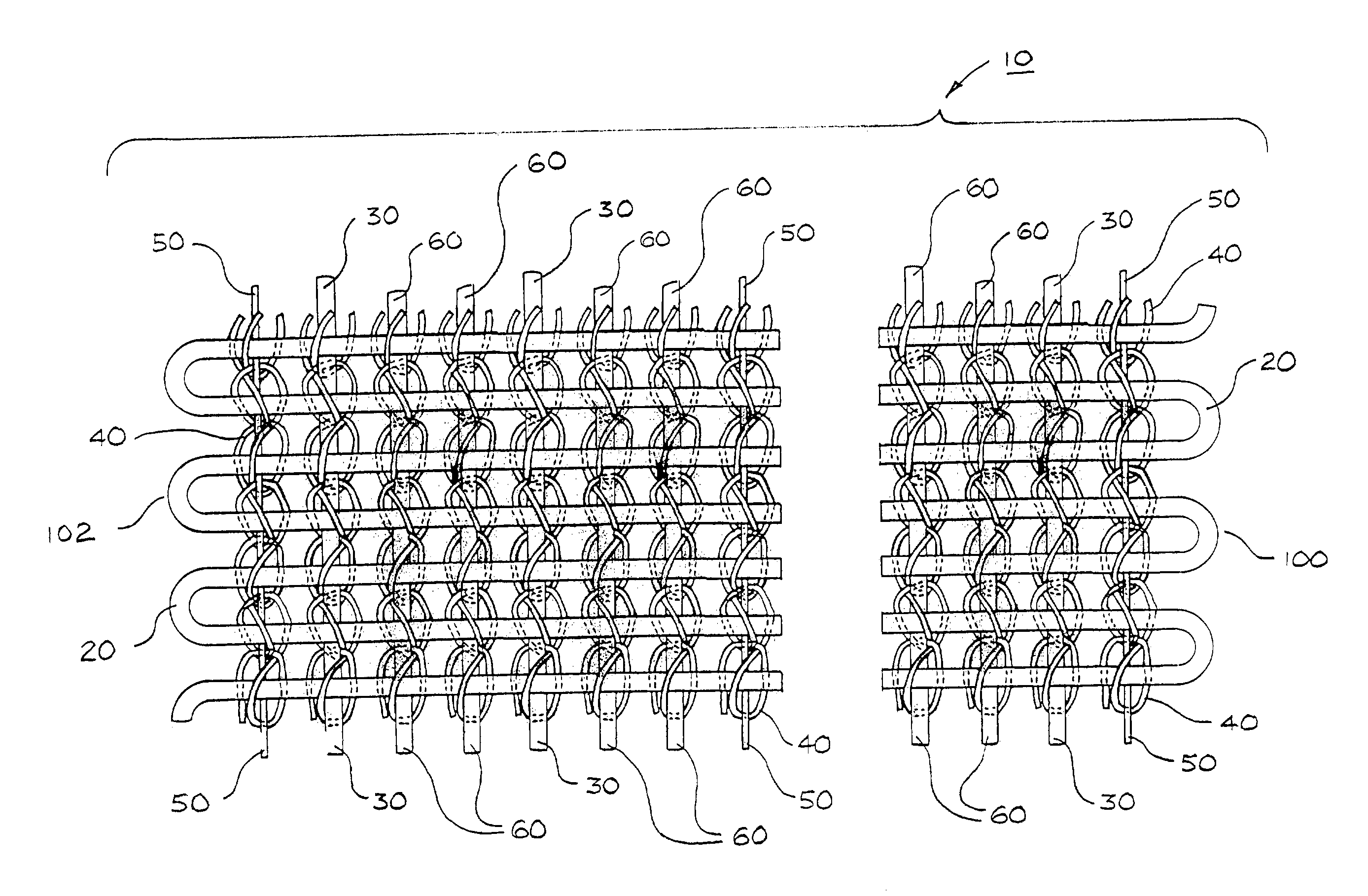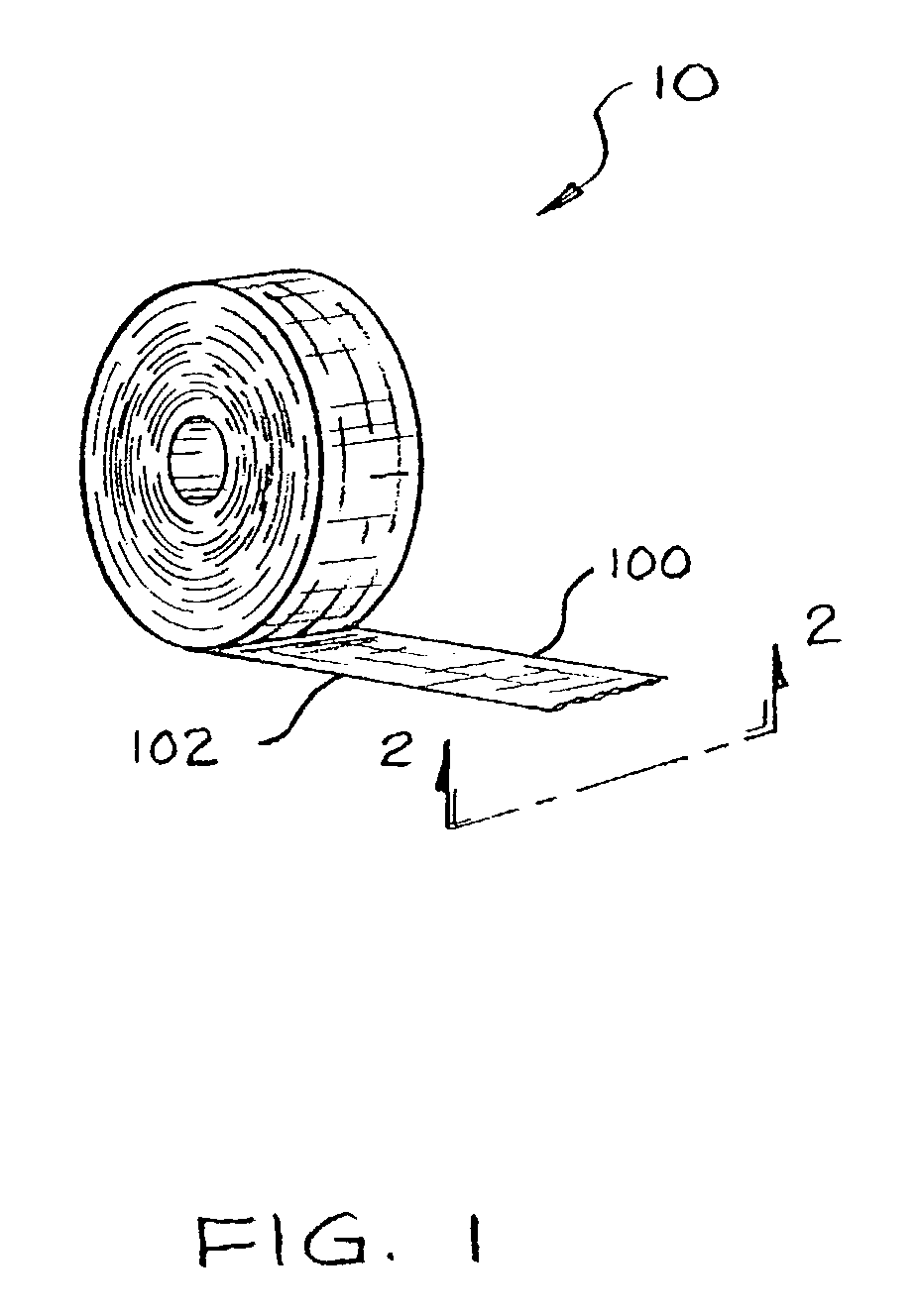Wire-reinforced elastic webbing
a technology of elastic webbing and wire reinforcement, which is applied in the field of fabric webbing, can solve the problems of insufficient resiliency to provide cushioning, insufficient strength to support cushioning, and webbings that have at least limited elasticity, so as to limit the overall elongation of webbing material, the effect of unique balance of strength and elastic responsiveness to applied loads
- Summary
- Abstract
- Description
- Claims
- Application Information
AI Technical Summary
Benefits of technology
Problems solved by technology
Method used
Image
Examples
Embodiment Construction
[0013]As shown in FIG. 1, the invention provides an elongated strip of webbing material 10 that may be used in bedding, furniture, or other applications requiring a webbing material having a high tensile strength while maintaining a desirable degree of elastic or semi-elastic responsiveness under applied loads. The webbing material 10 may be provided in substantially any desired width. A typical range of widths for the webbing material 10 is about 1–6 inches, and a width of about 6 inches works well for many applications. The webbing material 10 may have a thickness of about 0.063 inch, but may be thinner or thicker depending on the desired physical properties for the reinforced webbing and the construction of knitted fabric.
[0014]As shown in FIG. 2, one embodiment 10 of the webbing material has a flat knitted construction. As used herein, the terms “flat knitted” and “flat knit” are used to describe and refer to a knitted fabric made on a flatbed-knitting frame as distinguished fro...
PUM
| Property | Measurement | Unit |
|---|---|---|
| elastic elongation | aaaaa | aaaaa |
| elastic elongation | aaaaa | aaaaa |
| width | aaaaa | aaaaa |
Abstract
Description
Claims
Application Information
 Login to View More
Login to View More - R&D
- Intellectual Property
- Life Sciences
- Materials
- Tech Scout
- Unparalleled Data Quality
- Higher Quality Content
- 60% Fewer Hallucinations
Browse by: Latest US Patents, China's latest patents, Technical Efficacy Thesaurus, Application Domain, Technology Topic, Popular Technical Reports.
© 2025 PatSnap. All rights reserved.Legal|Privacy policy|Modern Slavery Act Transparency Statement|Sitemap|About US| Contact US: help@patsnap.com



